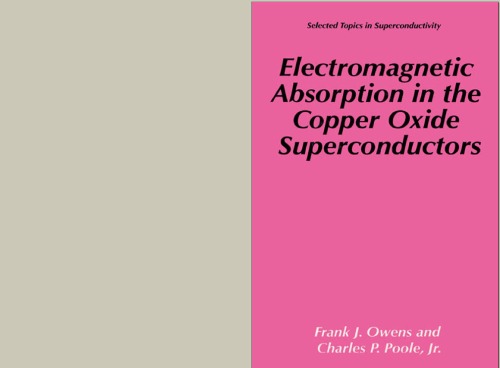

Most ebook files are in PDF format, so you can easily read them using various software such as Foxit Reader or directly on the Google Chrome browser.
Some ebook files are released by publishers in other formats such as .awz, .mobi, .epub, .fb2, etc. You may need to install specific software to read these formats on mobile/PC, such as Calibre.
Please read the tutorial at this link: https://ebookbell.com/faq
We offer FREE conversion to the popular formats you request; however, this may take some time. Therefore, right after payment, please email us, and we will try to provide the service as quickly as possible.
For some exceptional file formats or broken links (if any), please refrain from opening any disputes. Instead, email us first, and we will try to assist within a maximum of 6 hours.
EbookBell Team

4.0
16 reviews
ISBN-10 : 0306459485
ISBN-13 : 978-0306459481
Author: Frank J. Owens, Charles P. Poole Jr.
In 1987 a major breakthrough occurred in materials science. A new family of materials was discovered that became superconducting above the temperature at which nitrogen gas liquifies, namely, 77 K or –196°C. Within months of the discovery, a wide variety of experimental techniques were brought to bear in order to measure the properties of these materials and to gain an understanding of why they superconduct at such high temperatures. Among the techniques used were electromagnetic absorption in both the normal and the superconducting states. The measurements enabled the determination of a wide variety of properties, and in some instances led to the observation of new effects not seen by other measu- ments, such as the existence of weak-link microwave absorption at low dc magnetic fields. The number of different properties and the degree of detail that can be obtained from magnetic field- and temperature-dependent studies of electromagnetic abso- tion are not widely appreciated. For example, these measurements can provide information on the band gap, critical fields, the H–T irreversibility line, the amount of trapped flux, and even information about the symmetry of the wave function of the Cooper pairs. It is possible to use low dc magnetic field-induced absorption of microwaves with derivative detection to verify the presence of superconductivity in a matter of minutes, and the measurements are often more straightforward than others. For example, they do not require the physical contact with the sample that is necessary when using four-probe resistivity to detect superconductivity.
kims electromagnetic absorption material
electromagnetic absorption by water
electromagnetic absorption spectrum
electromagnetic absorption materials
electromagnetic absorption superpower
Tags: Electromagnetic, Absorption, Copper Oxide, Superconductors, Frank Owens, Charles Poole